#loving whatever in the pietà was going on here
Explore tagged Tumblr posts
Text
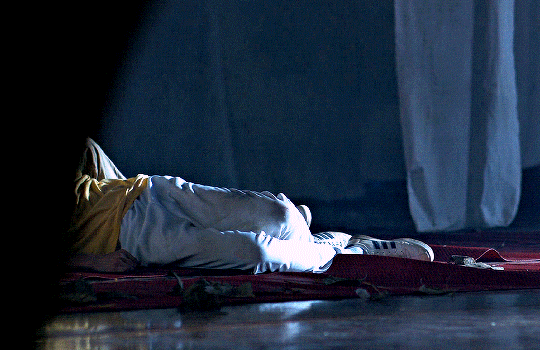
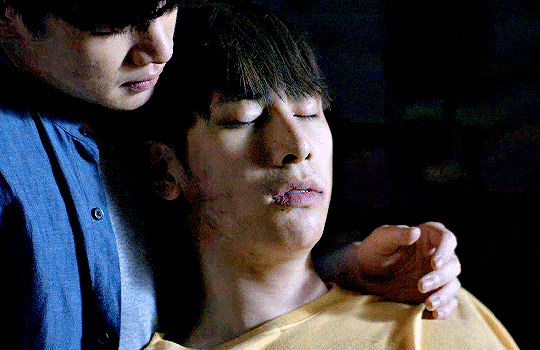

#dead friend forever#dead friend forever the series#mio athens#jet jetsadakorn#tantop#I GUESS#dffedit#deadfriendforeveredit#dffep10#sasa gifs#loving whatever in the pietà was going on here
180 notes
·
View notes
Note
Hello, hello!!! I hope you're having a good day/night/whatevs over there!!
Just wanted to tell you that I absolutely fucking fell in love with your artstyle. I remember first seeing you with your before the war Crowley work, and hooooooooooly shit!!!!! Imidiately went to your blog to check for other pieces and??? you're so fucking goood??? the way you can make things feel so calm yet so so so intense!! the way you do your lighting!!!! your anatomy!! EVERYThING, ABSOLUTELY EVERYTHING!!!!!
you're definately a big big big inspiration of mine. i hope i dont sound too intense if i tell you you're above Bob Ross for me??? who was my number one before this???
idk. i just adore your art and wanted to let you know. hope i'm not crossing any boundaries ^^'
take care now!!! buhbye!!!
-🌠
Hi there!!
First of all: you are not crossing any boundaries at all! I cannot put into words how immensely happy and honoured I am to read your kind message, thank you so much!
I myself I had almost entirely given up drawing, and it's only thanks to Neil Gaiman and this wonderful fandom that I got back into art. And to hear that someone now likes my things to the point of considering them part of their mental gallery and use them to feed their own imagination makes me so so happy!
I hope we can all improve and experiment together in this amazingly creative corner of the internet. You can see that at first I was struggling myself to find the style I wanted to go with (in the Pietà inspired piece I didn't really know what to do with my lineart: I drew it and then stood there like the mental equivalent of the Confused John Travolta meme), but there is so much to look and admire among the Good Omens fan artist here on tumblr that I am finally figuring it out. This is to say: go for it, if I managed to make images that people like, even after a decade long hiatus and with rusty fingers, anyone can!
I'll look forward to seeing more beautiful art of the fandom, maybe I'll see something that you drew!
In the meantime, let's light a candle for our beloved Bob Ross: may his curls guide us throught art struggles and remind us that there are no mistakes, just happy accidents!
Bye!!
4 notes
·
View notes
Note
"he's jesus coded", other cultures have resurrection tales, Jason is whatever flavor of pagan i find funny that day, hes definitely NOT """christian""", sorry, i DO make the rules <3
Hey, man, ya, I agree! People are allowed to project whatever they want onto characters. I love it when other people bring their own cultures into characters. I don’t know if this was sent in bad faith or not so I’m going to treat this ask as you being light-hearted but also as an excuse to share allusions!
(Also: I am not religious. I was simply raised in a religious society therefore this is me not being an expert in the matter, but highlighting what I’ve ingested in my lifetime)
Jason, though, does have a lot of biblical beats surrounding him.
The constant allusion to “La Pietà” is a very common example. The sculpture by Michelangelo is of Mary cradling her dead son after his crucifixion. A la Bruce cradling his dead body after his infamous murder. Talia cradling his comatose body as she dips him into the Lazarus pit in Rebirth. Also cover-wise: Talia on one of the Lost Days covers, Bruce cradling RH's body on Batman Annual V1 #25, and the N52 cover after Jason gets his face burnt off by the joker. Also, Jason sometimes is the one to cradle others like Duela Dent in Countdown and Rebirth as well as Bizzaro also in Rebirth.
Another easy example is the Lazarus pit, earning its name in reference to the story of Lazarus of Bethany who was dead for four days before Jesus raised him from the dead. Different branches of Christianity have stories that say Lazarus never smiled again after his resurrection due to the horrors he saw. (Other stories say he was completely unaware of himself being dead). Similar to how Jason is haunted by his murder, his resurrection, and finds no joy in being alive again.
The story of Lazarus also centers around the idea that his disease was never supposed to end in death. Rather the resurrection was supposed to emphasize the glory of God. Again, similar to role: Cosmic Mistake #3: Jason Todd who was resurrected by the universe as he wasn’t supposed to die as he did trapping him in a limbo of not supposed to be dead, but not supposed to be alive either.
Jason is often referred to as the "prodigal son" which is a biblical parable. I don't fully believe the comparison as the story focus on a younger son who squandered his inheritance. Jason absolutely did not squander anything when he left home. His mother murdered him. Jason held hard and fast to Bruce. He loved Bruce more than anything. Still loves him. He did not waste that love. And if you want to focus the family disapproval around Jason killing, well he doesn't regret the murders, so that doesn't work either. (Jason also was not welcomed back with open arms when he decided to start playing by Bruce's rules for the sake of having a family. So that also doesn't work)
Jason's memorial's famous epithet reads "A Good Solider" as the archangels of heaven are good soldiers to God.
I think Abraham using Issac as a sacrificial lamb to God is a nice, albeit a bit lofty, comparison to Bruce and his mission. Bruce (Abraham) ready to sacrifice Jason (Issac) by slitting his throat so he can't kill the Joker. Here: The mission reads as the scriptures he promises God (Bruce's conscious) to uphold and believe in. Jason is who he has to place in front and kill to have his conscious stay clean.
Being raised from the dead, as you mentioned, many cultures have resurrection stories. The trope is not unique to Christianity. But also Jesus magically rising from his grave after 6 months 3 days of death.
Oh My God, the Lucifer comparisons I could draw to this man! Okay, okay, okay, so bear with me as I talk about the tragedy of God and Lucifer.
Lucifer, the morningstar, the angel of light, was God’s favorite angel who fell after he rebelled. Raising an army due to God favoring his creation, mankind, and wanting the angels to love mankind more than they loved God. Lucifer refused to, depending on the branch and story/translation (as the reblog your referencing was about Catholic stained glass, not Christianity. Catholics are Christians, but not all Christians are Catholics. It’s a branch of the over-arching theology), bow down to the human race because they had no free will to pick and choose if they worshipped God’s son, Jesus, or not. He believed it made them unworthy of that kind of respect. As well as he couldn't stand to love them more than he loved his heavenly father, God.
This is also why Lucifer acted as a snake in the Garden of Eden, also known as "The Fall of Man", tempting Adam and Eve. As they chose to eat the forbidden apple (i.e. excepting the Knowledge of Evil as that is what it represents), the act cast them out of the garden, and they now had to deal with the consequences of being alive (think Pandora’s box), but, in the process, humanity also gained free will to make the choices we make. You can see it as a gift of agency. Eating the apple allowed us to be tempted by sin, but also make that choice for ourselves.
This act of rebellion, viewed as the original and worst of the seven deadly sins, is seen as the first act of pride (sometimes called vanity or hubris). Lucifer wanted to be seen as more important than God's creation. He wanted God's love the way humankind got God's love. Lucifer wanted God to love him as he does his lord. Thus he rose an army of angels to rebel against God.
So you have this kid, say his name is Jason and he moonlights as this child vigilante, say his moniker is Robin. Robin is supposed to be Batman's "shining light"(an angel of light, if you will imagine). Say this version of Batman's shining light, say this OG 80s run, is where people agree this Batman figure (who just happens to view himself as a god) is seen at his happiest. Say this God-like figure is forever changed due to the snuffing out of this light.
Now, say this God-figure, Batman, as we've been calling him, has this code, this "No-kill rule" where he believes anyone can become better and deserves as many chances as necessary to become a better version of themselves. Repent and forgiveness, if one may say. So even one of the most dangerous murderers in this hypothetical God-adjacent treated character's domain's history, the one who also happened to steal his "love and caring" from this "Batman", also deserves that chance.
Continuing, this "love and caring," this "shining light," returns, but is changed. He has fallen from this "No killing" code and rebels within this God's domain, bringing everything that was the norm to its knees. He stands before his father and demands his love. This love that he shares for all those who sin against him: these greedy money launders, these prideful rogues, these wrathful murders, this fallen son's wrathful murderer. This son is angry--wrathful. This son hubristically believes himself to be more important than his God's creation. He begs his father to love him more, not his creation, his mission, his oath, but him, his son. The son takes a stand for what he believes, will end all the misery himself, will do the deed himself. If the father doesn't want that to be so then he can banish his son back to his grave.
So the father banishes his son, and his son loathes--envies-- the father's creation more than he can ever say.
MY personal opinion on the Morningstar, and please don’t get angry with me Christians, this is just my experience with religion and how I was brought up, is that he just is. He’s an obvious allegory. He exists to represent something. He doesn’t have choice in what he does, he just has a job to do. I have a lot of sympathy for the devil actually. There’s that one Mark Twain quote that always stuck with me: “But who prays for Satan? Who, in eighteen centuries, has had the common humanity to pray for the one sinner that needed it most?” Completely, utterly altered my brain chemistry and how I looked at life when 10-year-old me read it. I just feel as though, just as Lucifer deserves help, I believe Jason deserves the help he needs to heal.
147 notes
·
View notes
Text
Honest Opinion - Scorpio Milo
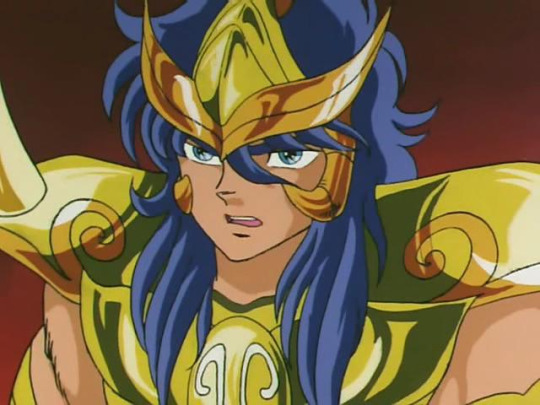
Hell yeah, the man’s here! Another poor Saint deprived of his name in the Italian dub, but the best son of a bitch I’ve ever seen in my life.
Warning: this is definitely longer than any other posts I’ve made with my opinions.
(Hades and Soul of Gold not taken into consideration, I need to re-watch them before talking)
Overall score (character, not looks) Classic: 10/10 Legend of Sanctuary: ?/10 More on this in a while
Okay, full disclosure. 1. I am a Scorpio 2. Milo is my favorite character of the entire franchise alongside Shun and Hades 3. I have an undying love for the Scorpio Saints This might be biased a little bit. But it’s still honest.
Now, onto the serious stuff. Milo. Where do I eve begin with this man? Right off the bat, I could immediately tell Milo was going to be a character I was going to like.
At the start, he seems like a man all over himself with his pride. The way he wanted to refuse a mission from the Pope because he didn’t want to fight against someone below him definitely told that story. And I was like “dude, this man is bizarre”, because I really didn’t know how to judge this Saint. Was he going to be good or bad as a character? I had no idea. Generally, I don’t like characters with that personality in the role of the “stereotypical” good guy, but I’d already been confused by a fair share of other Saints before him, so so prejudices.
My god, was I glad I didn’t brush him off. A couple episodes after, and Milo is off to Andromeda Island, ready to kill the everloving shit out of everybody, and I completely fell for this man. I mean, he should definitely stop being a damn contortionist, I need to cosplay him and how do I even lift my leg like that, but I’m going off topic. We see him unleash his tremendous power and basically destroy everything in sight as he followed the Pope’s order, and I though “okay, maybe he’s not just someone who doesn’t care about what he’s being told” and my view of Milo radically changed.
I was still confused by him, because I still didn’t know anything about his personality other than his pride, but that scene carved its way into my heart and stayed there as a proof of his almighty power and it’s refusing to leave.
Now, let’s make a jump forward onto his fight against Seiya and Shiryu. I have no words. As soon as I heard him and associated his voice (a voice that did change in the Italian dub from his first appearance to the 12 Temples) I was sold. Completely. His new voice matched perfectly a personality that I finally recognized as “mildly psycho but having fun while also being smart”, and finally seeing Milo in a proper fight sequence was amazing.
Ritenetevi fortunati, non v'ho dato morte. Non basta una puntura soltanto perché il veleno dello Scorpione faccia il suo fatale effetto; la calma vi sia compagna per ora: vi spegnerete molto più lentamente. Non è questa la degna fine dei traditori? La Cuspide Scarlatta è forse l'arma che più s'adatta a voi due Cavalieri: l'arma più lenta del Grande Tempio, l'arma che più provoca dolore! Benvenuti alla fine del viaggio, non altra conclusione è altrettanto adatta alla vostra follia!
All his techniques are good, he’s both merciless and merciful because he knows when to stop, and the Scarlet Needle? I love it. I love how they described it, and how Milo asks his victim to surrender before using it because he knows how painful it is as soon as Hyoga enters the picture. He struck a good nerve right there.
Fighting with Hyoga, he shows way more of his personality, he tries to reason with him, tries to let him go because Camus would surely be upset at Milo killing his disciple. And when Hyoga says no, I want to fight, Milo fights. He respects his choice, and keeps fighting, despite knowing he could disappoint more people than himself by doing so.
Hai sentito, Aquarius? Hai udito le parole di Crystal, tuo allievo? Le parole di chi ha voluto difendere se stesso. Lui ha espresso il desiderio di combattere con me. È diventato un uomo, un Cavaliere di cui non bisogna avere pietà, la pietà che toglie onore, intende. Dunque dovrò combattere con tutte le mie forze. Ne sarebbe offeso il suo onore, altrimenti, e insieme al suo il tuo onore. È evidente a questo punto, affrontarlo in battaglia è come riconoscerne il coraggio. Lo farò salire al paradiso dei Cavalieri, non gli darò requie! Sei d'accordo, Aquarius?
And then... he realizes he’s wrong. Before killing Hyoga, he realizes the lies he’d been told by the Pope, and helps him. He saves his life, instead of bragging about how he should have surrendered, or killing him and end it there. Milo is honorable, not just prideful, and it showed so much during that scene. A scene that, I have to admit, had me in (not quite literally) in tears. He knew he was going to risk the life of a friend, by saving Hyoga, but spared him anyway. Hoped him well anyway. You could tell that, I’m not making up any fanfiction shit right now. I could easily say “yeah, he was heartbroken because Hyoga was going to kill Camus and he loved him” but no. I’m telling the canon story, here, and you could tell he was worried about Hyoga and Camus, because Milo cares. A lot.
I deeply love this character, I cannot find anything bad to say about him. I want to be honest, and this is it. I loved every second of him, even if at the beginning I was uncertain about his personality. Milo is well written, well interpreted, and has a good arc in the classic series, even if short. And I can say, even without re-watching it, he’s amazing in Hades as well.
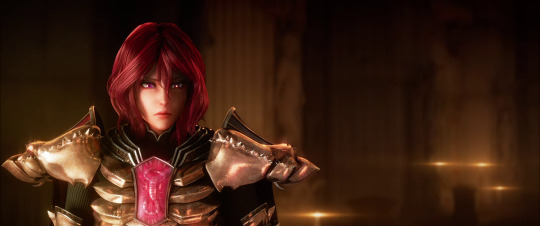
And now, let’s tackle the elephant in the room. Legend of Sanctuary. You might be familiar with my displeasure towards the Gold Saints in this movie, at this point. I don’t hate them, I generally think they could have been made better. I went berserk against Deathmask because they did a 180° on his personality in this movie, and... yeah, Milo is definitely a problem.
Not because he’s a woman. I don’t have a problem with female characters being introduces in a series, that’s obvious. I have a problem with it when it interferes with the story it’s taken from. So, Milo being a woman in Legend of Sanctuary is a huge problem because she is not supposed to be there. With all the other characters being the same as the old ones (appearance not withstanding), I hate that they only changed him. Either to change the whole crew, or keep it as it should be. This is exactly the same feeling I have for Netflix!Shun, I can’t stand it.
On her own, LoS!Milo is stunningly amazing. I loved her, I loved her personality, I loved how much she kicked Seiya’s ass, I saw a good characters as said “yeah, she’s cool”. She wasn’t far off from classic Milo, actually. Their personalities and reactions were pretty similar, in fact.
So, her score would be a 10/10, without hesitation.
But, LoS!Milo cannot be seen on her own. She’s part of the story. A story that shouldn’t have changed one character to fit whatever criteria they wanted her to fit. It seemed like something ripped straight from a genderbend fanfiction. Because of this, I cannot bring myself to love LoS!Milo as much as I normally would.
This might be controversial, a lot of people might have different opinions on her, but I’m honest. And I won’t change my mind.
#saint seiya#scorpio milo#legend of sanctuary#milo#scorpio no milo#milo dello scorpione#my opinion#honest opinion
42 notes
·
View notes
Text
WINGS Theory: Breaking out of the cycle of Reincarnation
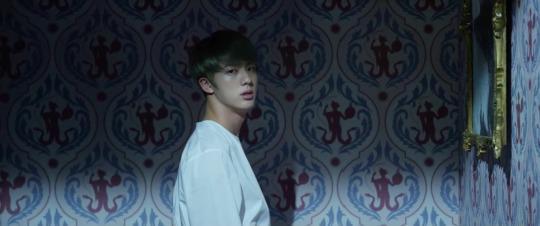
One of the statues constantly seen throughout WINGS era is the statue Pietà sculpted by Michelangelo, which depicts the body of Jesus on the lap of his mother Mary after the Crucifixion:
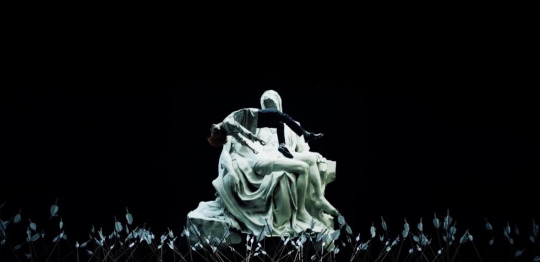
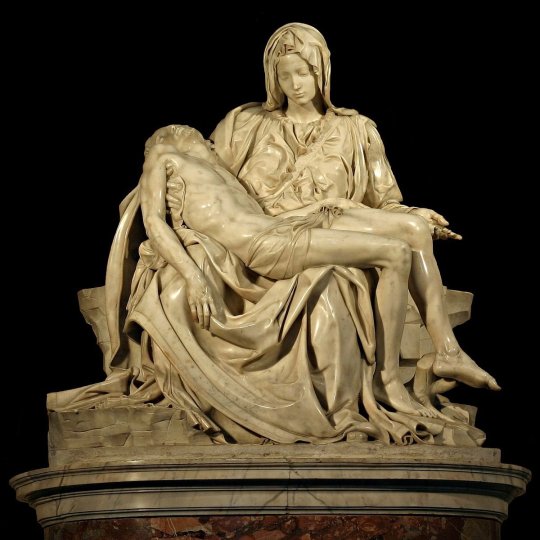
Guess what?
YUP. Pietà is related to Carl Jung’s concept of Life & Anima.
“The image of the pieta, of Mary Magdalene cradling the dead Christ in her lap, is the pristine archetypal image of the relationship between nature and the individual.”
In a sense, we are created by nature, by life, with the fate to age and eventually die.
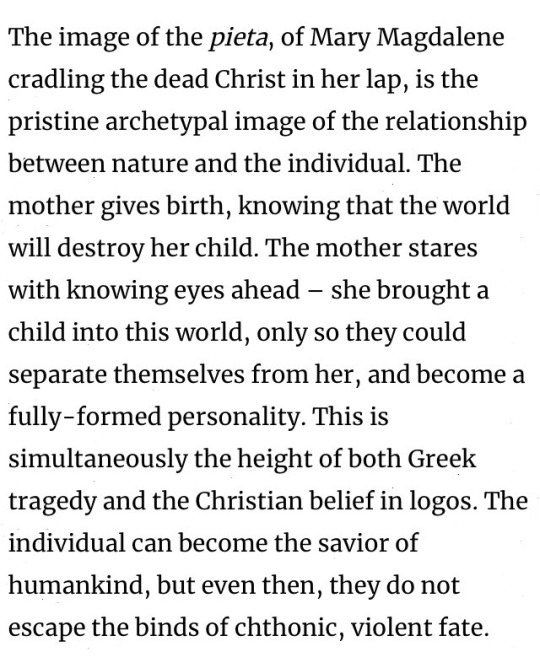
This is a natural process of life, as with everything, there are always good and bad, yin and yang, which is a very prevalent idea throughout Jung’s concepts and theories.
What’s most interesting, however, is the way Jung describes the cycle of life and reincarnation.
“The birth-death cycle wherein there are no individuals, only a cyclone of genetic matter in infinite self-consumption. The symbol of that cycle is the Ouroboros, the snake swallowing its own tail.”

Oroborous is a serpent who eats its own tail then continues to give birth to itself, with this cycle of it destroying then creating itself, over and over again in an infinite cycle. Ouroboros is also known as “the snake of reincarnation.”
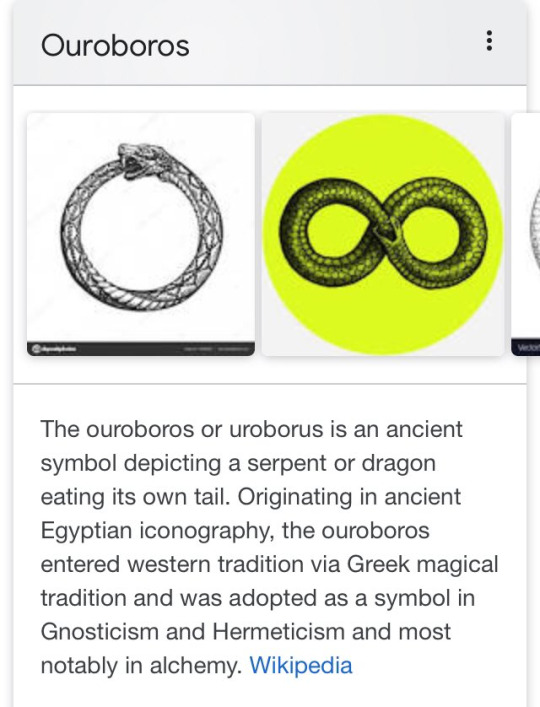

Now, Carl Jung has been known to heavily integrate multiple religions into his theories and writings, and Buddhism is not an exception.
The idea of reincarnation, karma and various levels of human consciousness are very significant throughout Buddhism.
As Ouroborous is continuously eating then giving birth to itself, you can think of it as us humans, continuously being born then dying, but never leaving this circle of karma and reincarnation... not until we reach enlightenment, which is the final and highest level of human consciousness. When an individual reaches enlightenment, they are finally released from the continuous cycle of karma and reincarnation. When one finally leaves this cycle of rebirth, they become their own god.
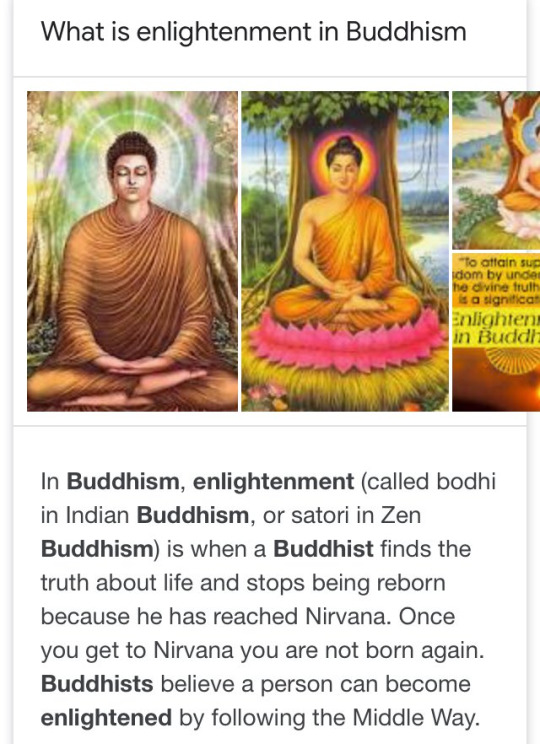
In the case of the BTS universe, Jin ultimately becomes his own god, Abraxas, who is the ultimate all-powerful god, by the end of AWAKE in WINGS short films.
The way Ouroborous slays then brings itself to life can be related to us humans in the sense of karma and reincarnation. Whatever we do in this life, creates good and bad karma. Your karma over various lifetimes continues to constantly cancel each other out as you commit acts of crime and kindness throughout different lifetimes. In a sense, we CREATE our own lives. What we do our past lives determines what type of life we get to live in our next lives. What we do “fertilizes” or builds us up to become certain individuals.
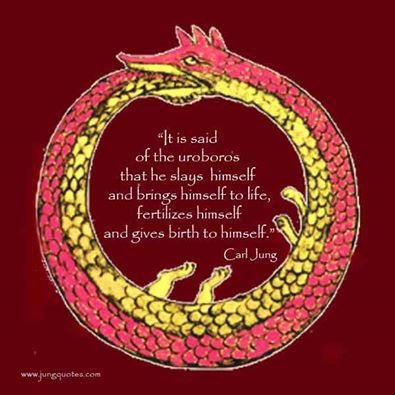
Going back to Neumann and Jung’s idea of the “World Parents”. The mother and the father represent logos and eros, anima and animus. The mother and father are like yin and yang, working together and fused in permanent chaos, the birth-death cycle.

Carl Jung once said,
“The Anima is the Archetype of Life itself.”
In a sense, Father or Animus represents death while Mother or Anima represents Life & birth.
But guess what? Again, they, mother and father, anima and animus, are ultimately one as a whole.
Now, why did I bring up this concept, and what’s the point of this theory?
Well, remember how in SAVE ME webtoons, Jin kept going back in time to save the boys, but could never succeed? And how every time he went back to save them, there would always be a different outcome?
Well, yes, though this webtoon and story could be interpreted into many different ideas, I’d like to separate it into 2 main similar concepts:
Dreams and Reincarnation
Life.
Like the movies Groundhog Day or Happy Death Day, the main characters never actually die or go back in time. Since whenever they die, they wake up in the same bed on the same day.
They are stuck in an infinite cycle until they figure out the solution to the problem, the reason why they’re stuck constantly going back to the same day every time.
When they finally wake up for the final time and finally leave the cycle of repetition, everything they went through feels like a dream.
Now, the same could be related to the concept of Reincarnation. Until you come to a complete understanding of life and your soul, and until you reach the highest level of human consciousness, you are stuck in this cycle of reincarnation and karma.
Now, with these ideas and concepts in mind, the BU storyline and concept could make a lot more sense. If you’ve read my previous theory thread about BTS’ MAMA performance, you know there were A LOT of references to WINGS displayed throughout the VCRs.
So, with that in mind, let’s take a look at WINGS era, specifically the WINGS short films and orders.
The order of the short films goes like this:
Begin, Lie, Stigma, First Love, Reflection, MAMA, Awake.
Now, if we take a look at the Map of Consciousness, we can see how the order of the short films works, and how AWAKE is the final stage of BTS’ consciousness, which will ultimately lead them to reach the final goal of the process of individuation.
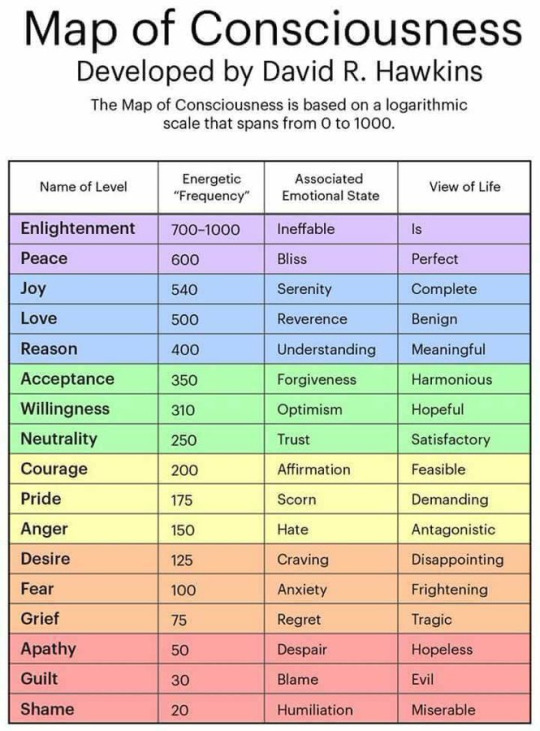
1. Begin - Jungkook
Jungkook has a nightmare. His worst fear is losing everyone he loves and seeing them unhappy. He sees things burning, including the piano that burned down when Yoongi’s mother died in the fire.
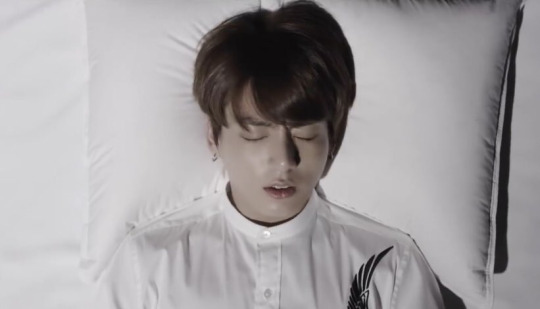
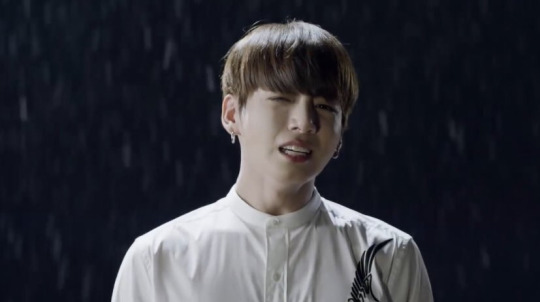
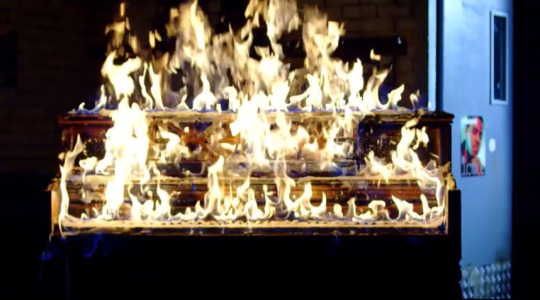
2. Lie - Jimin
Jimin is still in the hospital. His fear of the incident of the murder that happened at the arboretum still haunts him. He’s scared to tell the truth. He lies when being questioned about the truth.
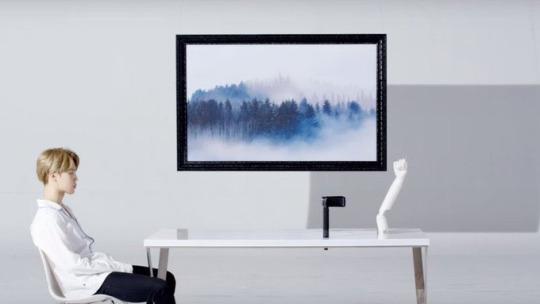
3. Stigma - Taehyung
Taehyung killed his father to save his sister from their abusive drunkard father. Taehyung often vandalizes public facilities and gets in trouble a lot. He ends up going to jail for murdering his father.
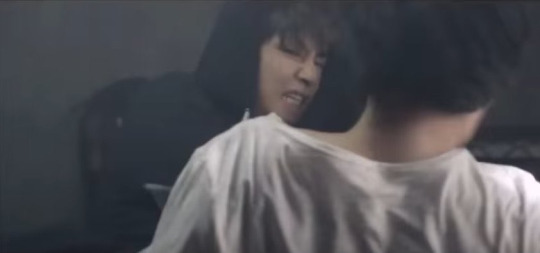
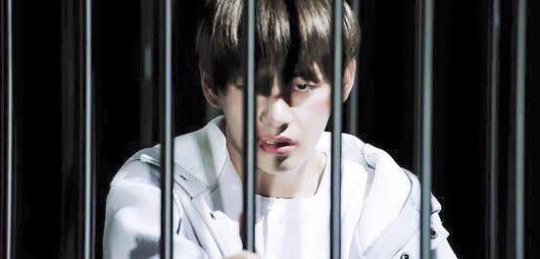
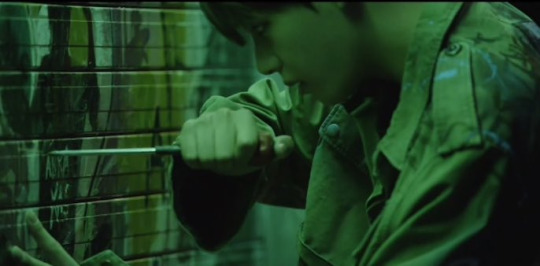
4. First Love - Yoongi
Yoongi’s house burns down and his mother dies in the fire. He is filled with anger, fear, and regret. He never played piano again after that.
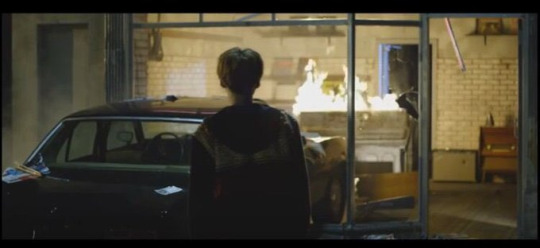
By now, you see the pattern throughout the first 3 short films: Fear, Disappointment, Deceitfulness, Anger, Tragedy, Misery, Hopelessness All of which are themes shown throughout the 7 lowest levels of human consciousness.
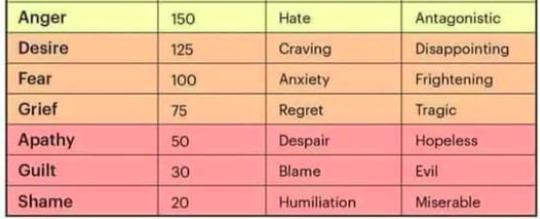
But here’s where things began to change.
5. Reflection - Namjoon
Namjoon is tattooing an image of a bird (messenger of abraxas) on his forearm. He begins to look at all the various reflections of himself. Namjoon’s fear is being lost in life. However, he has the courage to keep on living and moving, despite living in poverty. He’s in search of a better life for himself.
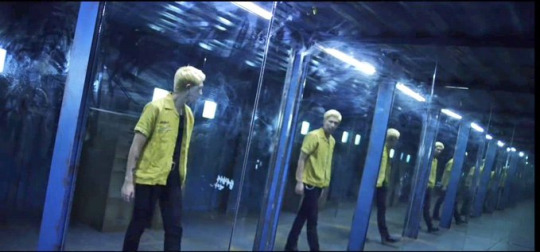
6. MAMA - Hoseok
Hoseok is in the hospital or psych ward (as he has Munchausen syndrome, which makes him think he has an illness). His mother abandoned him when he was very young. He constantly feels like the anima part of him is missing.
Later on, he realizes that he can depend on himself, when he finds discovers the anima within himself and realizes that there was anima and animus within himself all along, as symbolized by the painting with the signature “Eva” (Eva and Demian are the anima and animus of Sinclair, the main character of the book “Demian”, which is the basis of the concept for WINGS).
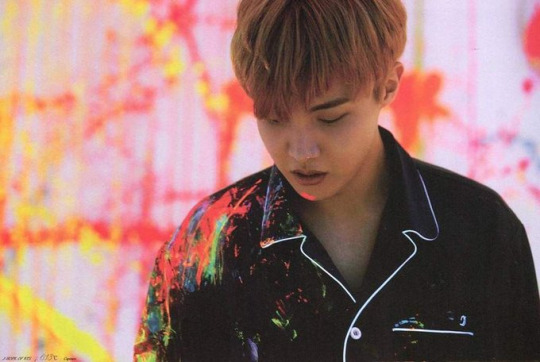
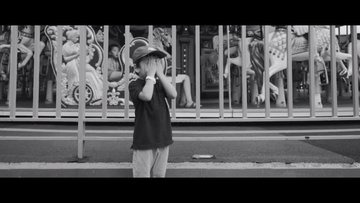
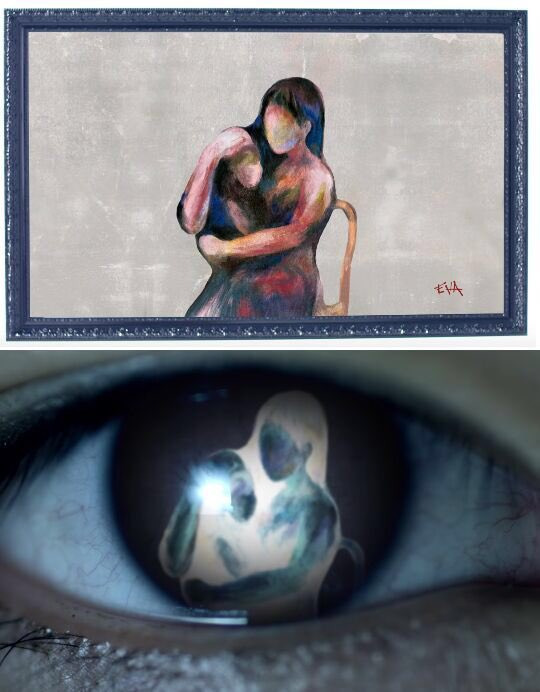
MAMA = My Anima My Animus.
Hoseok finally feels complete with both his anima and animus.
By now you see the following themes throughout Reflection & MAMA: Satisfactory, Hopefulness, Courage, Pride/Ego, Harmony, Completion. These are the 6 higher levels of human consciousness.
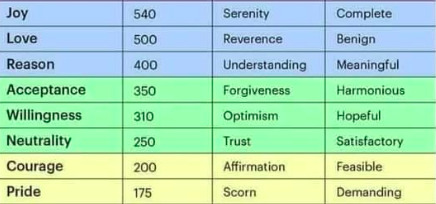
7. AWAKE - Seokjin
Jin finally learns what it means to truly love himself. He finally becomes his own god, as seen with the symbolism of the abraxas wallpaper. He learns to accept himself for who he is while knowing that he still has more to improve about himself. He learns to let go of his past, and be content with himself, as seen through him letting go and dropping the apple (Adam and Eve apple of temptation and poison)
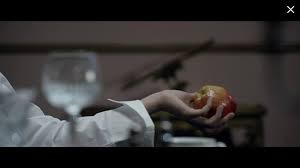
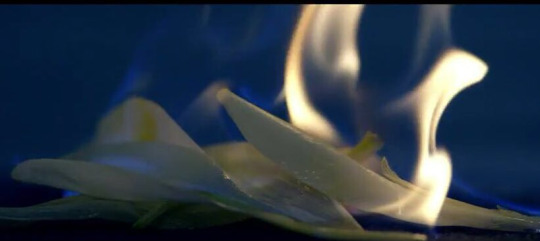

Here, you finally see the following themes in Awake: Love, Joy, Peace, Reason to continue on with life.
But NOT Enlightenment yet.
Why? Because enlightenment, the highest level of consciousness, will be reached once the Map of The Soul is complete. Once the true soul is found and truly understood. Only then, will they finally break out of the cycle of life.
Only then, will Jin finally stop traveling back to the same day to try and save his friends.
He won’t have to save his friends once they all reach enlightenment. Why?
Because they’ve learned to become their own gods, their own heroes. They’ve learned to truly love themselves and to save themselves.
“I say I’m fine, but will you save me from myself?”
“I will save me from myself, because I know I’m the one I should love in this world.”
#BTS#BTS theories#BU theories#Seokjin#Jin#Namjoon#RM#Yoongi#Suga#Taehyung#Jimin#Jungkook#Hoseok#Hobi#J-Hope#Bangtan#BTS WINGS#WINGS
18 notes
·
View notes
Text
sheev66 replied to your post “But like, i can’t really be the only one that considers “The...”
Your analysis makes perfect sense within the border of the episode. But that's not the point in the wider context of the series. the situations they go through together only grow more intense as the series goes along. It becomes evident, thanks to this episode demonstrating their relationship at that point, that they have grown much more close.
@sheev66
I’m not actually sure what you’re trying to say here, but I’ll try to reply to the best of my ability:
Your analysis makes perfect sense within the border of the episode.
Atla is a serialized show. It’s not Tom and Jerry, or Loony Toons, where you can have the characters die or go to space or get rich or whatever and then at the start of the next episode be back to the status quo. It something is true in one episode, then it must be true throughout the show.
If they want to change some fact, they have to show that fact changing otherwise it’s just plain bad writing.
But that's not the point in the wider context of the series.
I mean, I hope no one came out of a story about balance and growing up and learning to bear responsibility and heal after trauma, no matter how much the finale undermines these themes, thinking that the point is whether the main character got to make out with his mother figure who showed absolutely no interest in him outside, like, three isolated incidents.
the situations they go through together only grow more intense as the series goes along.
This is true, to a point. That point being “The Crossroads of Destiny”. That is the single most intense situation Aang and Katara go through. And the culmination of that situation is this:

Katara cradling Aang’s body in a Pietà.
The second most recognisable image of Western iconography, right after the Cross, the most easily identifiable image of Divine Motherly Love... and then they take it a step further.
Because, you see, you see, in every Pietà ever, Jesus’ body rests across Mary’s lap. Because Jesus is a grown man and she can’t support his weight with her hands alone. But Aang is a child. And Katara, Katara who had viewed him as her own since the moment she metaphorically gave him life in the very first episode, actually holds him up.
Couple that with the way the crystals in the background form swords, framing Katara as Mater Dolorosa as well, and you get the single most powerful and brilliant shot of the show.
This is what Katara and Aang’s relationship was. This is what it was supposed to be.
It becomes evident, thanks to this episode demonstrating their relationship at that point, that they have grown much more close.
Yes, they do grow much closer, but they do not do so romantically.
If you take out moments like the Fire Nation Footloose (which I have written about here and here) Katara treats Aang exactly the same all throughout the show. If you compare Katara’s behavior towards Aang in “The Southern Air Temple” to, say, “Sozin’s Comet Pt. 1″, it’s exactly the same—motherly.
On the other hand, Aang’s crush remains steady until they finally do something interesting in “The Guru” where they reveal that Aang is projecting his love for the Air Nomads, a whole people, onto Katara and how that is his primary source of internal conflict.
The fact that they completely threw that away and resolved it by having him hit his back on a pointy rock is horrible, terrible, very bad writing.
237 notes
·
View notes
Text
The Art of Storytelling: Innovation by BTS
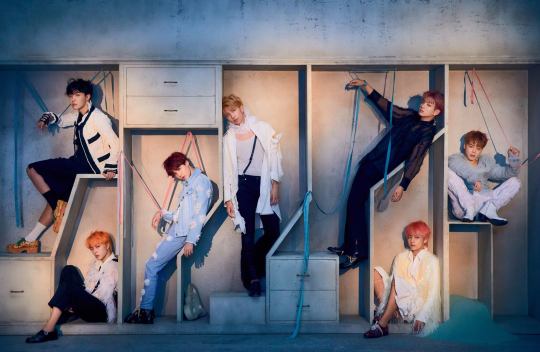
Stories are a celebration of humanity and are communicated through platforms as a form of expression or artistry. Stories would normally be shared between two receiving ends in a single channel: people in a conversation, a speaker to a crowd, an artist through their music. But I’ve only ever seen one group of people combine multiple mediums to birth a whole alternative universe. And that’s worldwide Korean boy band BTS, internationally known as Beyond the Scene. They create not only music, dance, art, and literature to tell the world of their narrative called “The Most Beautiful Moment in Life”, but also utilize technology for enhanced visualization, marketing, and multi-platform distribution.

Members of BTS from their latest Japanese single FAKE LOVE/Airplane pt.2; from left to right: RM, Jin, Suga, J-Hope, Jimin, V, and Jungkook
BTS debuted in 2013 and is comprised of seven members: leader, rapper, and producer RM at the forefront; vocalist, visual, and the eldest member, Jin; rapper and producer Suga; dancer, rapper, and producer J-Hope; dancers and vocals Jimin and V; and youngest member, as well as the main vocal and lead dancer, Jungkook.
BTS is known for their self-composed and self-produced songs that root from their personal experiences “growing up” in the music industry. They translate their own stories into relatable messages that explore the themes of the struggle of youth and their pursuit for dreams and success, coming-of-age, the difficulty of mental illnesses, togetherness in friendship, and ultimately, the harrowing journey towards self-love, which are all significant experiences encountered by many in this age of expediency.
Now, what I found most interesting about their storytelling is that, while all the aforementioned themes have been reflected across their entire discography (which also holds a diverse range of genres from hip-hop, rap, rock, ballad, R&B, EDM, trap and the like), they melded all those elements together and integrated different forms of art to produce a spectacularly visual, auditory, and spiritual experience that is the story of “The Most Beautiful Moment in Life”.




“I NEED U” music video’s take on mental illness and potrayals of suicide
This BTS universe begun with their early 2015 extended play album called “The Most Beautiful Moment in Life, Part 1” (Hwa Yang Yeon Hwa in Korean, or HYYH), which deals with the struggles of mental health. Their titular single, “I NEED U”, manifests such themes where the members portray life in despair. J-Hope is seen overdosing on pills and subsequently fainting on a highway; V had killed his father and is now living with utmost regret for the sake of protecting him and his sister; and then there’s Suga and Jimin committing acts of suicide through death by fire and death by drowning, respectively.



“RUN” music video; juxtapositions of isolation and freedom
By November of 2015, they released a sequel called “The Most Beautiful Moment in Life, Part 2” where the main themes include camaraderie, friendship, and loneliness. This is told in the form of the music video “RUN”, where the boys are evidently in an “us against the world” concept, as freedom from inhibition takes its course.


Music video of “FIRE”; the boys’ writing and controlling their own destiny to spite their haters



“EPILOGUE: Young Forever” music video, which consists of VCR flashbacks from their previous music videos, as well as their finding comfort and solace in each other in the aftermath of their losses
By the first quarter of 2016, they released the final compilation of the HYYH universe called “Young Forever”, where they gave more emphasis on the enjoyment of youth (as is the title), as well as a combination of themes from the first two albums. “FIRE”, in particular, is an anthem of the underdogs to disrupt the norm. In contrast, “EPILOGUE: Young Forever” takes on a more sentimental tone lyrically and visually, representing the struggles and responsibilities of being artists of youth in whatever form and occupation.





The artistic take of “Blood Sweat & Tears” on classical artwork and allegory, painted with themes from Demian: The Story of Emil Sinclair’s Youth by Herman Hesse and philosophies from Friedrich Nietzsche
In the same year, the “WINGS” album was released that reflected adulthood, forgiveness of the self, and responsibility for mistakes, all the while utilizing a stylized but substantive collection of classical art, literature, symbolism, and allegory for a richer narrative. “Blood Sweat & Tears” referenced works such as Demian: The Story of Emil Sinclair’s Youth by Herman Hesse; The Fall of the Rebel Angels and the Landscape with the Fall of Icarus both painted by Peter Bruegel the Elder; and The Lament for Icarus by Herbert James Draper. Biblical motifs such as the event of The Last Supper, and a remodeled version of the Pietà by Michelangelo, were seen in some scenes, as well.

Interwoven artwork of the “LOVE YOURSELF” trilogy from left to right: 'Her’, ‘Tear’, and ‘Answer; depicts blossoming love, withering love, and loving oneself, respectively
In 2017 all the way to 2018, the tripartite “LOVE YOURSELF” series became another of their hits, and focused on the path to self-love. The first edition, LOVE YOURSELF 承 'Her', mainly communicates the joys of loving oneself and others. The sequel, LOVE YOURSELF 轉 'Tear', explores themes of pain, suffering, and separation, and more specifically, the difficulty of reconciling with yourself and your demons. The last release, LOVE YOURSELF 結 'Answer', teaches oneself to appreciate the gradual process of self-love. Rather than rush the process, forgive and move on; it’s a journey, not a race.

"SAVE ME” webtoon; Jin’s graphic character discovering his ability to time travel
What makes BTS stand out from the rest and establish a foothold in the international music scene is not just the relevance of their message, or their thought-provoking concepts; but it’s also the way they celebrate art and humanity through the following mediums: striking music videos for visualization, explosive live performances that also contain clues and secrets to the story, supplementary notes in the form of diary entries posted on their social media handles that house additional details to the fragmented universe (of course, originally posted in Korean; thus, translated by fans—like right here), and even a recently publicized webtoon called “SAVE ME” that, by far, answers a lot of questions to the HYYH universe. Surprisingly (or even as expected), BTS had recently tapped into the literary fountain and released preorders for their trilogy books called “Smeraldo Books” or “HYYH The Notes”, which are available in both English and Korean. Many fans have speculated that the books will finally draw the universe to a full circle after three years of being milked.
Moreover, because the narrative had been meticulously planned since the start of their debut and has not yet drawn to a close, the story of The Most Beautiful Moment in Life has also become such a fantastic marketing tool. Fans are once again re-streaming their previous music videos and songs to piece the visuals and imagery, the webtoon, and the notes together. Not only does this solidify the story even more, but it also entails exposure for BTS, their brand, music, message, and love of different art forms. It’s exactly this kind of marketing that keeps the fans hooked and anticipating, wanting and craving for more, all the while fueling artistic interpretation and getting their lives enlightened with the group’s heartfelt, healing, and inspiring messages. After all, marketing must be humanizing.
As it is, no artist has done it quite like BTS has. That’s why even though I’ve only been a fan since late 2016, that’s still the longest time I’ve stayed within a fandom because BTS are the artists of life. BTS use their voices and talents to inspire people of all ages to have strength against the face of adversity, and oftentimes, to go against the system and carve their own path to self-discovery. Their creativity and passion has encouraged many from various walks of life, and will continue to do so with their high engagement with and empathy for the audience. They are timeless and transcendent, and are constantly breaking the barriers of language and storytelling right at its core.
References
BTS Official Website: http://bts.ibighit.com/bts.php
BTS Official Twitter: https://twitter.com/bts_bighit?lang=en
BTS Profiles (translated and curated from different K-media articles): https://kprofiles.com/bts-bangtan-boys-members-profile/
“I NEED U” Music Video: https://www.youtube.com/results?search_query=i+need+u
“RUN” Music Video: https://www.youtube.com/watch?v=5Wn85Ge22FQ
“FIRE” Music Video: https://www.youtube.com/watch?v=HBj4y9Zibao
“EPILOGUE: Young Forever” Music Video: https://www.youtube.com/watch?v=HBj4y9Zibao
“Blood Sweat & Tears” Music Video: https://www.youtube.com/watch?v=hmE9f-TEutc
Official SMERALDO Books Twitter Profile: https://twitter.com/smeraldo_books?lang=en
HYYH Notes Translations: https://twitter.com/i/moments/918138828581347328?lang=en
“SAVE ME” Webtoon: https://www.webtoons.com/en/drama/bts-save-me/list?title_no=1514&page=1
Official “HYYH The Notes” Preorders: https://m.ibighit.com/goods/catalog?code=0016
0 notes
Text
We had to 'lose' Torres...
Pedro Simón
There's a superb tale by Sergi Pàmies that starts like this: "I had to die to know if they loved me".
I already knew that we all loved Fernando Torres a lot, but until 22:40 on this 2nd of March of 2017 I didn't know exactly how much. Right there, stunned, on the floor, reminiscent of a Tyson's 'sparring', that wasn't Atleti's '9'. No. Right there lying on the grass there was the guy who sits on the right side of our couch, our daughters' godfather, and our bike-riding friend.
So when on Thursday Fernando died for a while (because all of us thought he was dying looking at Gimenez crying, Fajr praying, and that Michelangelo Pietà that was the Gabi-Vrsaljko-Fernando triangle, trying to stop him from swallowing his tongue); when we saw that, I mean; when he fell from the sky like a pierrot whose strings you cut off with some scissors; when Simeone heard a crack and we forgot about everything (the shot on wood, the result, the Champions league spots, fuck everything), then, I insist, we realized something: like in Pàmies tale, he had to die for five minutes to know how much we loved him.
The one that was choking unconscious was like that son coming back from abroad. And like he was part of our family, we were looking at our phones thinking that in whatever moment it would rang, and it'd be Olalla o Mono Burgos. Calling us, all the Atleticos, one by one: Fernando is fine, don't worry, he sends you a lot of kisses, go to sleep now.
I met Fernando on July of 2015. It was because of an interview. I did something I never do: I brought my kids to the interview. Because I wanted them to listen right there things like those he said. "When my parents told me that they couldn't do something, the conversation was over". "I've lived all my life in a 80 square meters’ flat in Fuenlabrada. I know where I come from". "The real idol is that mother that raises five kids, alone, without a couple, working 12 hours a day".
This Thursday my eldest, who had an History test the next day, came in the minute 85 when he heard me screaming. He thought we had conceded a goal. He saw Fernando, he got scared, he came back to the Neolithic, he got scared even more.
- How's the studying going? - I asked the next morning.
- How's Fernando doing? - He replied. As if we had been called by Auntie Olalla or Mono Burgos, who is that relative who always brings presents.
In case you're not here, in case you get tired of playing only 20 minutes, in case you go to China, in case we don't see each other again, I'm going to yell from the stands how much I love you the next day I can. That, and of course, I will ask for Vrsaljko's renewal.
#I read this and I thought it was outstanding#fernando torres#article#my translations#atleti#atletico de madrid
106 notes
·
View notes
Text
The One in Which I Torture Myself With Batman v Superman: Dawn of Justice
(written 3/27/2016) 1. I had NO IDEA Bruce Wayne's parents were murdered. I've NEVER EVER seen this on film before, like, you know, in almost every other Batman movie. 2. The gun breaking the pearl necklace was actually a cool visual. Give credit to Frank Miller's The Dark Knight Returns for that. In fact, go read that right now if you want to see an older, bitter, more brutal Batman done right. TDKR is probably the greatest Batman graphic novel of all time (not for the kiddos, though). 3. Little Bruce getting swarmed by bats. Another visual we've NEVER SEEN BEFORE! 3 minutes in and I'm already cranky. Step it up, Zack and hack scribes. 4. 9/11 imagery amidst an alien invasion in a superhero movie... mmmkay. 5. Sure, Batfleck. Run into the debris/particulate cloud without attempting to shield your eyes/nose/mouth. Whatever. 6. That little girl looked an awful lot like a doll when The Batfleck saved her from becoming an IHOP breakfast special. Perhaps the budget wasn't big enough to make that look better? Pfft. Yeah right. Laziness or incompetence. You pick. 7. I at least appreciate the effort to acknowledge the wanton destruction and mass civilian casualties that were the result of the over-the-top, moronic, seemingly interminable, and unintentionally hilarious Kryptonian Super Fight in Man of Steel (aka Man Is This Fight Steel Going On?) 8. Lois can't stay out of trouble: sand edition. 9. You know the secret to a long and injury-free life? Threatening Superman's girlfriend. Said no one ever. 10. Holly Hunter sounds just like Jodie Foster in Silence of the Lambs. 11. Get it, Lois. Flood that bathroom. 12. Batman gives out free autographs with a branding iron. Nice. 13. This version of Lex Luthor is just irritating to watch. Prop up Gene Hackman and let him give some life and charm to the role. 14. Hans Zimmer phoned this score in. A bit of overkill on the Lex Luthor walk into the Kryptonian ship/body area. Almost a parody. If so, well done Hans. 15. There are 2 more hours of this. I'm in cinematic hell. 16. Change.org petition to create a Lex Luthor-free version of this film. Sick of him. 17. Was I supposed to laugh out loud at The Batfleck's nightmare? Because I did. 18. Lois Lane in the men's room. Because she's ballsy. A Strong!Woman. 19. More Jeremy Irons, less Batfleck. Make it happen, DC. 20. There you are, Wonder Woman. Save us from this film! 21. Stop talking, Superman. Shirt off. Take it off. Back in the bathtub with you. 22. This messiah imagery is so subtle and nuanced that they go as far as to say it literally. Hmmm. Might he meet Jesus' end? A movie that came out on Good Friday. Gee. It's all so deep. I just can't guess where it's going................ 23. How convenient. The Batfleck has visions. The Flash comes to him speaking of Lois Lane. Mmmkay. 24. Seriously, Hans. Ease up on the score. 25. I'm bored. Batman is in action in the Batmobile and I'm bored. Not good. 26. "Tell me, do you bleed? You will." Bad dialogue for $100, Alex. Groan-worthy. 27. I get the feeling that explosion was supposed to be meaningful. Didn't work. Bored as hell. On the bright side, it's half-way over! 28. Batman works out! This was apparently worthy of a montage? It's not like Batman Begins where he's learning to fight; this is just a shirtless Batman swinging a sledgehammer against a large tire and other such details ESSENTIAL to the narrative. 29. More visions. This time Supes talks to Ghost Dad. Writers, we need to have a long talk. 30. In my opinion, The Batfleck is the crappiest looking Batman in the suit since the Clooney Bat-Nipple disaster. 31. I appreciate that Superman didn't abruptly stop Lois' descent when he rescued her from falling to her death. Yay for no broken necks or backs! 32. Cavill is so wooden as Superman. Good lord. 33. Shut up, Lex. Your philosophizing is tiresome and idiotic and extends the running time. 34. Well that brief scene between Lois and Clark was purely for plot contrivance so Lois knows where to chase him. --------Begin scene *Superman flies in* 'Hey, honey, I have angst. I have to fight Batman in Gotham. No one stays good.' *Flies away* End scene.------- WRITERS! WE REALLY NEED TO TALK! 35. Shoehorned intro to the future members of the Justice League. Can't wait for that one..................... (which actually makes me sad because I loved watching TJL as a kid). 36. This fight is so dumb. No suspense. Supes doesn't even want to fight so doesn't give it full effort and Batfleck ain't killin' Superman. 37. Batfleck stops fighting Superman because their mothers have the same first name. I'm not kidding. Mmmmkay. 38. Leave Diane Lane alone! Under the Tuscan Sun wasn't that bad. 39. Did one of the henchmen quote a Cole Porter song to Diane Lane? Smooth. 40. OK. I legit laughed at Batman bouncing that crate off of one of the henchmen's heads. Nap time for naughty people! 41. Doomsday looks like the Poo Monster from the X-Files episode Arcadia. Uncanny. 42. They were nice enough to inform us multiple times that the area of the fight was civilian free. The true legacy of Man of Steel. 43. Wonder Woman is here to kick some Poo butt! She looks pretty cool in costume. 44. Lois is in trouble again, but under water this time. No happy endings in the bathtub this time, sadly. 45. It would be nice to actually see what's going on and know who's who during this fight. 46. Kind of cheesy-bittersweet Lois and Clark moment, but I'll allow it. 47. Down goes Doomsday! Down goes Doomsday... and Superman. Ruh roh, Shaggy. As I predicted. The Messiah Sacrifice. 48. We have some not so subtle quasi-Pietà imagery with Lois and Clark. 49. Luthor gets prison-shaved and is finally bald. Good riddance rats nest! 50. Superman was going to propose. Poor Lois. 51. He won't be dead for long. He still has to be in the Justice League. Will he be resurrected with a mullet like in the comics? Let's hope.
0 notes
Text
What writers really do when they write
We often discuss art this way: the artist had something he “wanted to express”, and then he just, you know … expressed it. We buy into some version of the intentional fallacy: the notion that art is about having a clear-cut intention and then confidently executing same.
The actual process, in my experience, is much more mysterious and more of a pain in the ass to discuss truthfully.

Совсем недавно на Гардиан появился прекрасный текст о писательстве.
Делюсь с вами оригинальными размышлениями:
George Saunders: what writers really do when they write
A series of instincts, thousands of tiny adjustments, hundreds of drafts … What is the mysterious process writers go through to get an idea on to the page?
1
Many years ago, during a visit to Washington DC, my wife’s cousin pointed out to us a crypt on a hill and mentioned that, in 1862, while Abraham Lincoln was president, his beloved son, Willie, died, and was temporarily interred in that crypt, and that the grief-stricken Lincoln had, according to the newspapers of the day, entered the crypt “on several occasions” to hold the boy’s body. An image spontaneously leapt into my mind – a melding of the Lincoln Memorial and the Pietà. I carried that image around for the next 20-odd years, too scared to try something that seemed so profound, and then finally, in 2012, noticing that I wasn’t getting any younger, not wanting to be the guy whose own gravestone would read “Afraid to Embark on Scary Artistic Project He Desperately Longed to Attempt”, decided to take a run at it, in exploratory fashion, no commitments. My novel, Lincoln in the Bardo, is the result of that attempt, and now I find myself in the familiar writerly fix of trying to talk about that process as if I were in control of it.
We often discuss art this way: the artist had something he “wanted to express”, and then he just, you know … expressed it. We buy into some version of the intentional fallacy: the notion that art is about having a clear-cut intention and then confidently executing same.
The actual process, in my experience, is much more mysterious and more of a pain in the ass to discuss truthfully.
2
A guy (Stan) constructs a model railroad town in his basement. Stan acquires a small hobo, places him under a plastic railroad bridge, near that fake campfire, then notices he’s arranged his hobo into a certain posture – the hobo seems to be gazing back at the town. Why is he looking over there? At that little blue Victorian house? Stan notes a plastic woman in the window, then turns her a little, so she’s gazing out. Over at the railroad bridge, actually. Huh. Suddenly, Stan has made a love story. Oh, why can’t they be together? If only “Little Jack” would just go home. To his wife. To Linda.
The writer is that person who, embarking upon her task, does not know what to do
What did Stan (the artist) just do? Well, first, surveying his little domain, he noticed which way his hobo was looking. Then he chose to change that little universe, by turning the plastic woman. Now, Stan didn’t exactly decide to turn her. It might be more accurate to say that it occurred to him to do so; in a split-second, with no accompanying language, except maybe a very quiet internal “Yes.”
He just liked it better that way, for reasons he couldn’t articulate, and before he’d had the time or inclination to articulate them.
An artist works outside the realm of strict logic. Simply knowing one’s intention and then executing it does not make good art. Artists know this. According to Donald Barthelme: “The writer is that person who, embarking upon her task, does not know what to do.” Gerald Stern put it this way: “If you start out to write a poem about two dogs fucking, and you write a poem about two dogs fucking – then you wrote a poem about two dogs fucking.” Einstein, always the smarty-pants, outdid them both: “No worthy problem is ever solved in the plane of its original conception.”
How, then, to proceed? My method is: I imagine a meter mounted in my forehead, with “P” on this side (“Positive”) and “N” on this side (“Negative”). I try to read what I’ve written uninflectedly, the way a first-time reader might (“without hope and without despair”). Where’s the needle? Accept the result without whining. Then edit, so as to move the needle into the “P” zone. Enact a repetitive, obsessive, iterative application of preference: watch the needle, adjust the prose, watch the needle, adjust the prose (rinse, lather, repeat), through (sometimes) hundreds of drafts. Like a cruise ship slowly turning, the story will start to alter course via those thousands of incremental adjustments.
The artist, in this model, is like the optometrist, always asking: Is it better like this? Or like this?
What a pleasure it is to be, on the page, less of a dope than usual
The interesting thing, in my experience, is that the result of this laborious and slightly obsessive process is a story that is better than I am in “real life” – funnier, kinder, less full of crap, more empathetic, with a clearer sense of virtue, both wiser and more entertaining.
And what a pleasure that is; to be, on the page, less of a dope than usual.
3
Revising by the method described is a form of increasing the ambient intelligence of a piece of writing. This, in turn, communicates a sense of respect for your reader. As text is revised, it becomes more specific and embodied in the particular. It becomes more sane. It becomes less hyperbolic, sentimental, and misleading. It loses its ability to create a propagandistic fog. Falsehoods get squeezed out of it, lazy assertions stand up, naked and blushing, and rush out of the room.
Is any of this relevant to our current political moment?
Hoo, boy.
When I write, “Bob was an asshole,” and then, feeling this perhaps somewhat lacking in specificity, revise it to read, “Bob snapped impatiently at the barista,” then ask myself, seeking yet more specificity, why Bob might have done that, and revise to, “Bob snapped impatiently at the young barista, who reminded him of his dead wife,” and then pause and add, “who he missed so much, especially now, at Christmas,” – I didn’t make that series of changes because I wanted the story to be more compassionate. I did it because I wanted it to be less lame.
But it is more compassionate. Bob has gone from “pure asshole” to “grieving widower, so overcome with grief that he has behaved ungraciously to a young person, to whom, normally, he would have been nice”. Bob has changed. He started out a cartoon, on which we could heap scorn, but now he is closer to “me, on a different day”.
How was this done? Via pursuit of specificity. I turned my attention to Bob and, under the pressure of trying not to suck, my prose moved in the direction of specificity, and in the process my gaze became more loving toward him (ie, more gentle, nuanced, complex), and you, dear reader, witnessing my gaze become more loving, might have found your own gaze becoming slightly more loving, and together (the two of us, assisted by that imaginary grouch) reminded ourselves that it is possible for one’s gaze to become more loving.
Or we could just stick with “Bob was an asshole,” and post it, and wait for the “likes”, and for the pro-Bob forces to rally, and the anti-barista trolls to anonymously weigh in – but, meanwhile, there’s poor Bob, grieving and misunderstood, and there’s our poor abused barista, feeling crappy and not exactly knowing why, incrementally more convinced that the world is irrationally cruel.

4
What does an artist do, mostly? She tweaks that which she’s already done. There are those moments when we sit before a blank page, but mostly we’re adjusting that which is already there. The writer revises, the painter touches up, the director edits, the musician overdubs. I write, “Jane came into the room and sat down on the blue couch,” read that, wince, cross out “came into the room” and “down” and “blue” (Why does she have to come into the room? Can someone sit UP on a couch? Why do we care if it’s blue?) and the sentence becomes “Jane sat on the couch – ” and suddenly, it’s better (Hemingwayesque, even!), although … why is it meaningful for Jane to sit on a couch? Do we really need that? And soon we have arrived, simply, at “Jane”, which at least doesn’t suck, and has the virtue of brevity.
But why did I make those changes? On what basis?
On the basis that, if it’s better this new way for me, over here, now, it will be better for you, later, over there, when you read it. When I pull on this rope here, you lurch forward over there.
This is a hopeful notion, because it implies that our minds are built on common architecture – that whatever is present in me might also be present in you. “I” might be a 19th-century Russian count, “you” a part-time Walmart clerk in 2017, in Boise, Idaho, but when you start crying at the end of my (Tolstoy’s) story “Master and Man”, you have proved that we have something in common, communicable across language and miles and time, and despite the fact that one of us is dead.
Another reason you’re crying: you’ve just realised that Tolstoy thought well of you – he believed that his own notions about life here on earth would be discernible to you, and would move you.
Tolstoy imagined you generously, you rose to the occasion.
The empathetic function in fiction is accomplished via the writer’s relation both to his characters and to his readers
We often think that the empathetic function in fiction is accomplished via the writer’s relation to his characters, but it’s also accomplished via the writer’s relation to his reader. You make a rarefied place (rarefied in language, in form; perfected in many inarticulable beauties – the way two scenes abut; a certain formal device that self-escalates; the perfect place at which a chapter cuts off); and then welcome the reader in. She can’t believe that you believe in her that much; that you are so confident that the subtle nuances of the place will speak to her; she is flattered. And they do speak to her. This mode of revision, then, is ultimately about imagining that your reader is as humane, bright, witty, experienced and well intentioned as you, and that, to communicate intimately with her, you have to maintain the state, through revision, of generously imagining her. You revise your reader up, in your imagination, with every pass. You keep saying to yourself: “No, she’s smarter than that. Don’t dishonour her with that lazy prose or that easy notion.”
And in revising your reader up, you revise yourself up too.
5
I had written short stories by this method for the last 20 years, always assuming that an entirely new method (more planning, more overt intention, big messy charts, elaborate systems of numerology underlying the letters in the characters’ names, say) would be required for a novel. But, no. My novel proceeded by essentially the same principles as my stories always have: somehow get to the writing desk, read what you’ve got so far, watch that forehead needle, adjust accordingly. The whole thing was being done on a slightly larger frame, admittedly, but there was a moment when I finally realised that, if one is going to do something artistically intense at 55 years old, he is probably going to use the same skills he’s been obsessively honing all of those years; the trick might be to destabilise oneself enough that the skills come to the table fresh-eyed and a little confused. A bandleader used to working with three accordionists is granted a symphony orchestra; what he’s been developing all of those years, he may find, runs deeper than mere instrumentation – his take on melody and harmony should be transferable to this new group, and he might even find himself looking anew at himself, so to speak: reinvigorated by his own sudden strangeness in that new domain.
It was as if, over the years, I’d become adept at setting up tents and then a very large tent showed up: bigger frame, more fabric, same procedure. Or, to be more precise (yet stay within my “temporary housing” motif): it was as if I’d spent my life designing custom yurts and then got a commission to build a mansion. At first I thought “Not sure I can do that.” But then it occurred to me that a mansion of sorts might be constructed from a series of connected yurts – each small unit built by the usual rules of construction, their interconnection creating new opportunities for beauty.
6
Any work of art quickly reveals itself to be a linked system of problems. A book has personality, and personality, as anyone burdened with one will attest, is a mixed blessing. This guy has great energy – but never sits still. This girl is sensitive – maybe too much; she weeps when the wrong type of pasta is served. Almost from the first paragraph, the writer becomes aware that a work’s strengths and weaknesses are bound together, and that, sadly, his great idea has baggage.
For example: I loved the idea of Lincoln, alone at night in the graveyard. But how is a novel made from one guy in a graveyard at night? Unless we want to write a 300-page monologue in the voice of Lincoln (“Four score and seven minutes ago, I did enter this ghastly place”) or inject a really long-winded and omniscient gravedigger into the book (we don’t, trust me, I tried), we need some other presences there in the graveyard. Is this a problem? Well, it sure felt like one, back in 2012. But, as new age gurus are always assuring us, a “problem” is actually an “opportunity”. In art, this is true. The reader will sense the impending problem at about the same moment the writer does, and part of what we call artistic satisfaction is the reader’s feeling that just the right cavalry has arrived, at just the right moment. Another wave of artistic satisfaction occurs if she feels that the cavalry is not only arriving efficiently, but is a cool, interesting cavalry, ie, is an opportunity for added fun/beauty – a broadening-out of the aesthetic terms.
In this case, the solution was pretty simple – contained, joke-like, in the very statement of the problem (“Who else might be in a graveyard late at night?”).
I remembered an earlier, abandoned novel, set in a New York State graveyard that featured – wait for it – talking ghosts. I also remembered a conversation with a brilliant former student of mine, who said that if I ever wrote a novel, it should be a series of monologues, as in a story of mine called “Four Institutional Monologues”.
So: the book would be narrated by a group of monologuing ghosts stuck in that graveyard.
And suddenly what was a problem really did become an opportunity: someone who loves doing voices, and thinking about death, now had the opportunity to spend four years trying to make a group of talking ghosts be charming, spooky, substantial, moving, and, well, human.
7
A work of fiction can be understood as a three-beat movement: a juggler gathers bowling pins; throws them in the air; catches them. This intuitive approach I’ve been discussing is most essential, I think, during the first phase: the gathering of the pins. This gathering phase really is: conjuring up the pins. Somehow the best pins are the ones made inadvertently, through this system of radical, iterative preference I’ve described. Concentrating on the line-to-line sound of the prose, or some matter of internal logic, or describing a certain swath of nature in the most evocative way (that is, by doing whatever gives us delight, and about which we have a strong opinion), we suddenly find that we’ve made a pin. Which pin? Better not to name it. To name it is to reduce it. Often “pin” exists simply as some form of imperative, or a thing about which we’re curious; a threat, a promise, a pattern, a vow we feel must soon be broken. Scrooge says it would be best if Tiny Tim died and eliminated the surplus population; Romeo loves Juliet; Akaky Akakievich needs a new overcoat; Gatsby really wants Daisy. (The colour grey keeps showing up; everything that occurs in the story does so in pairs.)
Then: up go the pins. The reader knows they are up there and waits for them to come down and be caught. If they don’t come down (Romeo decides not to date Juliet after all, but to go to law school; the weather in St Petersburg suddenly gets tropical, and the overcoat will not be needed; Gatsby sours on Daisy, falls for Betty; the writer seems to have forgotten about his grey motif) the reader cries foul, and her forehead needle plummets into the “N” zone and she throws down the book and wanders away to get on to Facebook, or rob a store.
The writer, having tossed up some suitably interesting pins, knows they have to come down, and, in my experience, the greatest pleasure in writing fiction is when they come down in a surprising way that conveys more and better meaning than you’d had any idea was possible. One of the new pleasures I experienced writing this, my first novel, was simply that the pins were more numerous, stayed in the air longer, and landed in ways that were more unforeseen and complexly instructive to me than has happened in shorter works.
Without giving anything away, let me say this: I made a bunch of ghosts. They were sort of cynical; they were stuck in this realm, called the bardo (from the Tibetan notion of a sort of transitional purgatory between rebirths), stuck because they’d been unhappy or unsatisfied in life. The greatest part of their penance is that they feel utterly inessential – incapable of influencing the living. Enter Willie Lincoln, just dead, in imminent danger (children don’t fare well in that realm). In the last third of the book, the bowling pins started raining down. Certain decisions I’d made early on forced certain actions to fulfilment. The rules of the universe created certain compulsions, as did the formal and structural conventions I’d put in motion. Slowly, without any volition from me (I was, always, focused on my forehead needle), the characters started to do certain things, each on his or her own, the sum total of which resulted, in the end, in a broad, cooperative pattern that seemed to be arguing for what I’d call a viral theory of goodness. All of these imaginary beings started working together, without me having decided they should do so (each simply doing that which produced the best prose), and they were, it seemed, working together to save young Willie Lincoln, in a complex pattern seemingly being dictated from … elsewhere. (It wasn’t me, it was them.)
Something like this had happened in stories before, but never on this scale, and never so unrelated to my intention. It was a beautiful, mysterious experience and I find myself craving it while, at the same time, flinching at the thousands of hours of work it will take to set such a machine in motion again.
Why do I feel this to be a hopeful thing? The way this pattern thrillingly completed itself? It may just be – almost surely is – a feature of the brain, the byproduct of any rigorous, iterative engagement in a thought system. But there is something wonderful in watching a figure emerge from the stone unsummoned, feeling the presence of something within you, the writer, and also beyond you – something consistent, wilful, and benevolent, that seems to have a plan, which seems to be: to lead you to your own higher ground.
Оригинал статьи: https://www.theguardian.com/books/2017/mar/04/what-writers-really-do-when-they-write?utm_source=esp&utm_medium=Email&utm_campaign=Bookmarks+base&utm_term=221700&subid=15054282&CMP=EMCBKSEML3964
0 notes